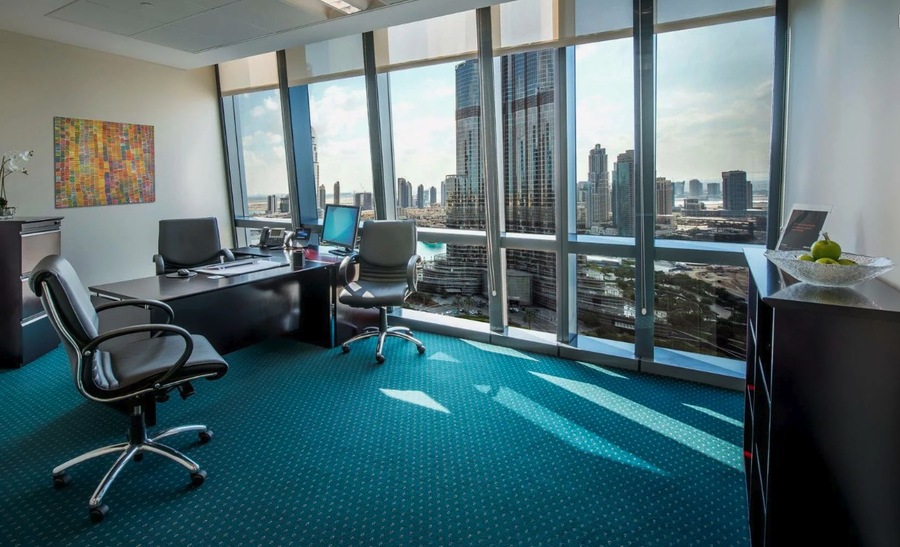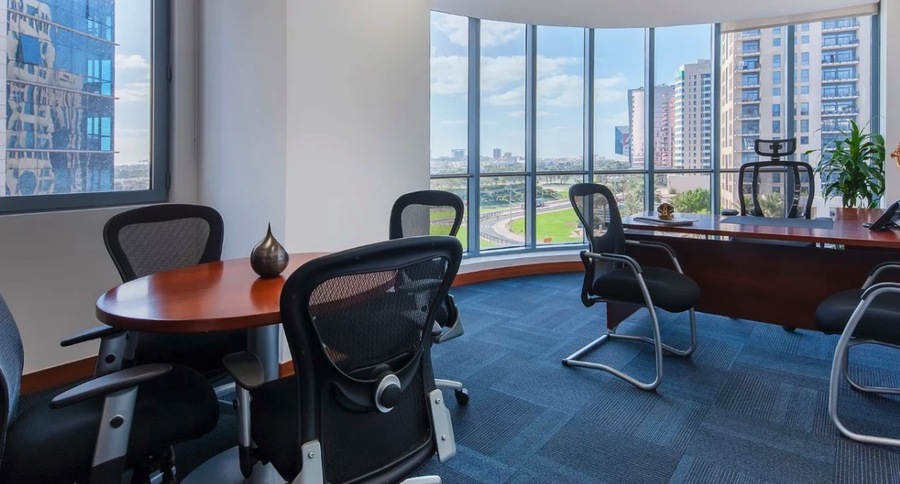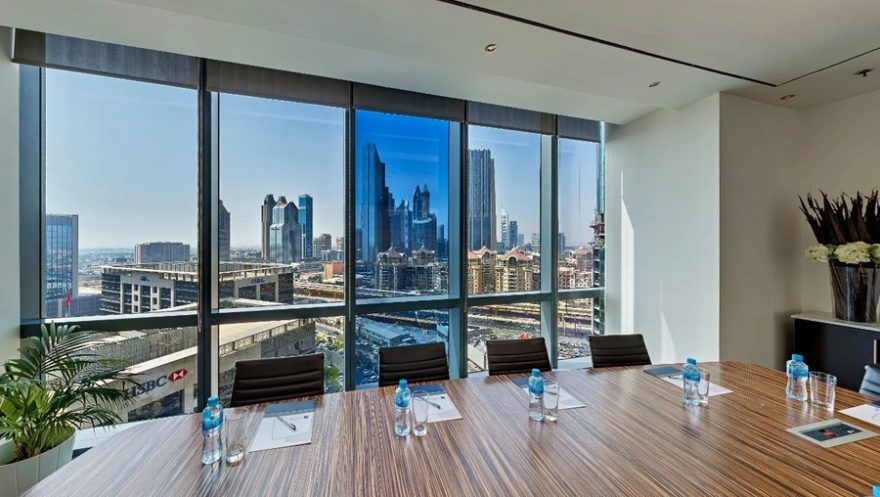One prominent trend observed in urban environments throughout the globe in recent years is the transformation of office premises into residential units. This phenomenon is responding to the rising demand for urban living spaces by changing metropolitan skylines and bringing in a new wave of rental homes. Using current research, statistics, and real-world examples, we will explore the benefits, drawbacks, and effects on the rental market of this extensive piece, including the growing trend of office-to-flat conversions and the implications for office for rent in Dubai.
The Drivers Behind Office-to-Apartment Conversions
Changing Work Patterns
Workplace trends have quickly changed due to the COVID-19 epidemic, with remote employment commonplace for many businesses. Traditional office spaces are becoming less and less in demand as more organizations adopt flexible working arrangements. Due to this change, many commercial buildings need to be more occupied or utilized, forcing property owners to look for other uses for these areas. Changing offices into residences is a workable way to deal with this issue.
Urban Housing Demand
People who want to be close to amenities, places of employment, and cultural events continue to be drawn to urban centers. However, in many areas, the supply of affordable housing has not kept up with the demand, resulting in rising rents and a scarcity of available homes. This strain can be reduced by turning office space into residential flats, increasing the availability of rental apartments in sought-after areas.
Economic Incentives
Governments and municipalities realize that office-to-apartment conversions can alleviate the housing deficit and boost metropolitan areas. Several have incentivized developers to embark on these projects, including tax cuts, subsidies, and expedited approval processes. For property owners, these incentives increase the financial appeal and viability of conversions.

Advantages of Living in Converted Office Spaces
Prime Locations
The buildings’ ideal locations make office-to-apartment conversions advantageous. Offices are frequently located in well-connected metropolitan neighborhoods or central business districts, giving inhabitants quick access to public transit, places of employment, and other services. Tenants in these remodeled areas may take advantage of the conveniences and energy of city life.
Unique Architectural Features
Unlike typical residential complexes, converted business buildings frequently keep distinctive architectural elements. Open floor layouts, big windows, and high ceilings are typical office space features that can be imaginatively included in flat designs. Tenants looking for contemporary and fashionable living spaces are drawn to these characteristics because they provide a distinctive and appealing appearance.
Sustainability Benefits
Reusing old structures for residential use is an environmentally friendly method. It lessens the need for new buildings, which frequently use a lot of resources and produce a lot of carbon emissions. Developers may reduce the environmental effect of housing construction and support urban sustainability goals by turning workplaces into flats.
Challenges of Office-to-Apartment Conversions
Design and Layout Constraints
Office buildings can have substantial architectural and layout issues because they are not typically intended for residential use. Careful planning is needed when converting these areas to create livable, pleasant settings. To fulfill residential requirements, problems must be fixed, including poor floor designs, insufficient plumbing and electrical systems, and a lack of natural light.
Zoning and Regulatory Hurdles
Navigating construction rules and zoning restrictions may be challenging for office-to-flat conversions. Commercial properties may not adhere to residential zoning laws, so they must apply for rezoning and follow tight building codes. These legal obstacles may delay projects and raise developer expenses.
Financial Viability
Conversions have financial incentives, yet these projects’ sustainability might still raise questions. Refitting office premises to residential standards can come at a significant expense, so developers must carefully consider the possible return on investment. The feasibility of these conversions depends on several factors, including building costs, housing demand, and market circumstances.
The Chrysler Building, New York City
The Chrysler Building in New York City is among the most well-known instances of office-to-flat conversions. Parts of this ancient structure, first built as an office skyscraper, have been transformed into opulent residential flats. This project exemplifies how adaptive reuse may suit contemporary housing demands while preserving architectural history. The Chrysler Building offers its residents abundant facilities, a prominent Midtown Manhattan location, and breathtaking city vistas.
One Post Office Square, Boston
One Post Office Square, a well-known office tower in Boston, is being converted into a mixed-use project that includes residential flats. This project aims to give much-needed housing in a busy metropolitan setting while reviving the downtown area. Developers are helping the city build a thriving and sustainable urban neighborhood by reusing office space.
According to research by the National Apartment Association (NAA), office-to-apartment conversions have dramatically grown recently, especially in large metropolitan regions. The estimate is that in the United States alone, more than 20 million square feet of office space were converted into residential units between 2020 and 2023. As long as there is a continued need for urban dwelling and distant employment, this trend is anticipated to continue.
According to research by the international real estate services company CBRE, office conversions may provide investors with profitable returns. After examining several conversion projects, the study concluded that when office buildings are adaptively reused for residential use, occupancy rates, and rental yields are frequently greater than standard office leases. These statistics highlight the financial sustainability of office-to-apartment conversions in the current market.

The Future of Office-to-Apartment Conversions
The practice of converting offices to apartments is a trend that is expected to gain traction as cities change. Numerous elements will propel this ongoing expansion:
Technological Progress
Building technology and creative design developments will make the difficulties involved with office-to-apartment conversions less difficult to overcome. Better building materials, modular construction methods, and intelligent building systems will make the conversion process more efficient and the converted rooms more livable.
Policy Support
Governments and municipalities will likely persist in providing advantageous regulations and incentives to encourage the conversion of offices into apartments. Policymakers will value adaptive reuse initiatives as they work to address housing shortages and revitalize underutilized commercial zones in cities.
Shifting Urban Dynamics
Urban dynamics always evolve due to various variables, including economic changes, population expansion, and lifestyle choices. The need for adaptable and varied housing choices will continue, which makes office-to-apartment conversions a sensible way to accommodate changing urban requirements. Integrating residential spaces into historically commercial districts can help create lively and sustainable urban communities as cities become more multipurpose and dynamic.
Conclusion
Because of shifting work habits, the need for urban housing, and financial incentives, there has been a notable shift in urban development with the growth of office-to-apartment conversions. These adaptations have several benefits, such as excellent sites, distinctive architectural elements, and sustainability advantages. However, they also come with difficulties in design, financial sustainability, and regulatory compliance.
Real-world examples like the Chrysler Building in New York City and One Post Office Square in Boston demonstrate the effective execution of office-to-apartment conversions, underscoring their potential to improve urban living. Recent research and statistics support this trend’s expansion and financial sustainability, indicating a promising future for conversions.
Office-to-apartment conversions will be essential to addressing the need for urban housing, repurposing vacant facilities, and promoting sustainable development as cities change. Developers may construct vibrant and livable urban neighborhoods that meet the demands of contemporary people by embracing creative design and adaptive reuse. Office-to-flat conversions have a bright future ahead of them, offering a new age of urban living that combines the comforts of home with the conveniences of the city.

Hockey fan, hustler, record lover, Mad Men fan and Guest speaker. Making at the nexus of beauty and elegance to craft experiences both online and in real life. Concept is the foundation of everything else.
